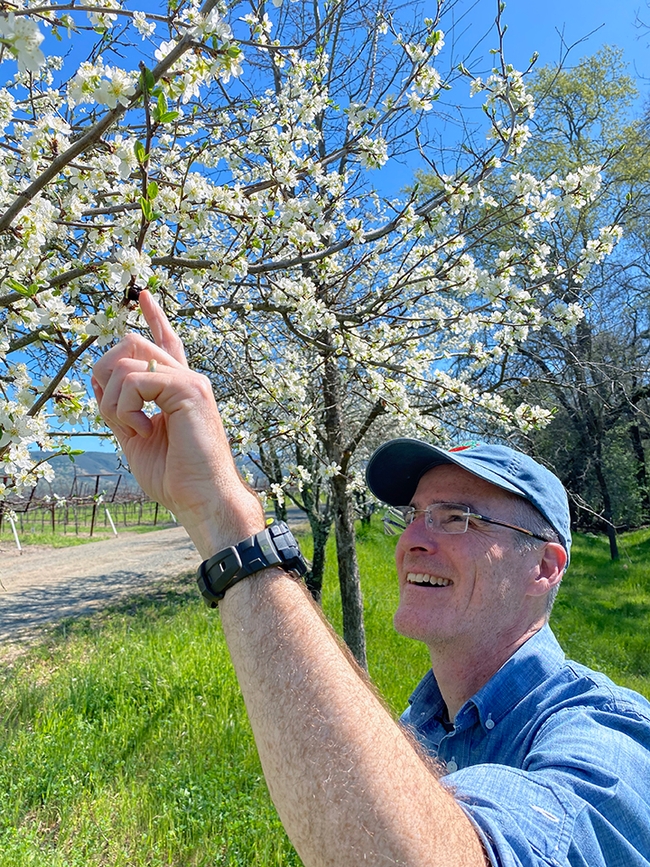
Its population is declining and he feared it might become extinct. B. occidentalis, sometimes called the "white-bottomed bee" due to its distinctive white markings on its abdomen, is known for pollinating blackberries, cherries, apples and blueberries.
Fast forward to today and the UC Davis research on how climate change is "rapidly restructuring North American bumble bee communities."
Newly published research from the laboratory of Professor Neal Williams, a pollination ecologist in the UC Davis Department of Entomology and Nematology (and close friend and colleague of Thorp), indicates a substantial shift in bumble bee communities.
The analytical paper, “Warming Summer Temperatures Are Rapidly Restructuring North American Bumble Bee Communities” --authored by ecologist Jeremy Hemberger, a former postdoctoral fellow in the Williams lab, and Professor Williams--appears in Ecology Letters.
“This is one of the first papers to show really substantial shifts in community composition in bumble bees due to climate, but also in insects more broadly,” said Hemberger, now a postdoctoral researcher at his alma mater, the University of Wisconsin, Madison. “We're also able to partition the effect we found to being driven by a loss of cold-adapted species, and a rapid rise in warm-adapted species across North America, but alarmingly we see that, above 50° parallel north, even warm-adapted species are declining.”
The 50th parallel north is a circle of latitude that is 50 degrees north of the Earth's equatorial plane. It crosses Europe, Asia, the Pacific Ocean, North America and the Atlantic Ocean. At this latitude, the sun is visible for 16 hours and 22 minutes during the summer solstice, and 8 hours, 4 minutes during the winter solstice, according to Wikipedia.
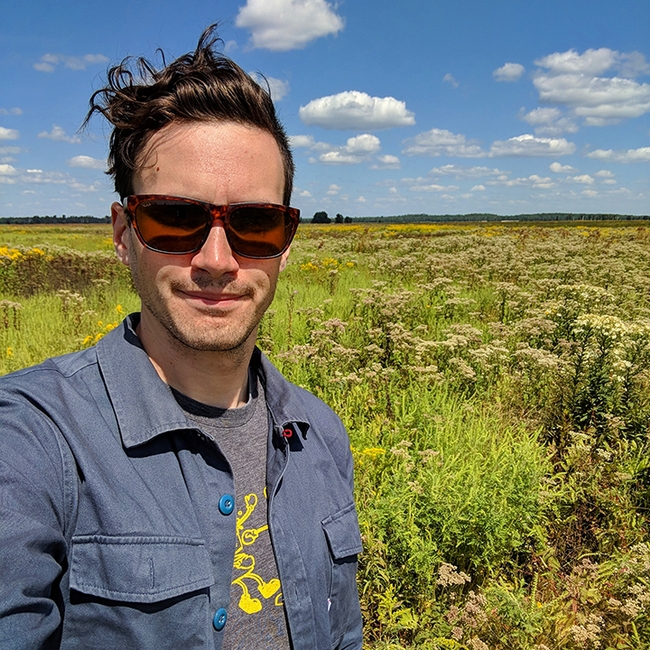
“Though additional confirmation is needed, our results suggest that northern bumble bee communities may be in crisis, with significant species turnover and declines in abundance that may threaten the persistence of populations in the coming decades,” they wrote.
“Overall, our work provides strong evidence of the pervasive impacts a warming planet has for insect biodiversity, particularly for historically cool-adapted species,” they related. “It also identifies regions of concern where anthropogenic climate warming is rapidly restructuring the communities of an ecologically important group of insects.”
They used along-term dataset of North American bumble bee species occurrences to determine whether the community temperature index (CTI), a measure of the balance of warm- and cool-adapted species in a community, has increased given warming temperatures. The database of 781,280 records from 1805 to 2020 was derived from a variety of sources, including natural history collections, research studies, and citizen science programs. To match the temporal range of available climate data, they used bumble bee records collected between 1960 and 2018.
“Over the last 29 years across the continent, bumble bee communities increasingly consist of fewer cool-adapted and more warm-adapted species with resultant increases in the community temperature index, a measure of the balance of warm- and cool-adapted species,” they wrote. “Changes are most pronounced at mid- to high latitudes and high elevations in the American Rockies, Intermountain West and central Mexico.”
Their project, launched in 2020 and completed in 2023, focused on 59 species. All California bumble bees were included in the analysis. The authors noted that the long-term, rising summer temperatures are “particularly alarming” to the Western bumble bee, Bombus occidentalis; the two-formed bumble bee, B. bifarius of Western North America; and the forest bumble bee, B. sylvicola, a high-altitude specialist native to North America and widely distributed in Canada.
B. occidentalis is one of the cool-adapted species that is declining. The yellow-faced bumble bee, B. vosnesenskii, native to the West Coast, is one of the "biggest winners” per the analysis.
Read the paper at https://onlinelibrary.wiley.com/doi/full/10.1111/ele.14492.
Attached Images:
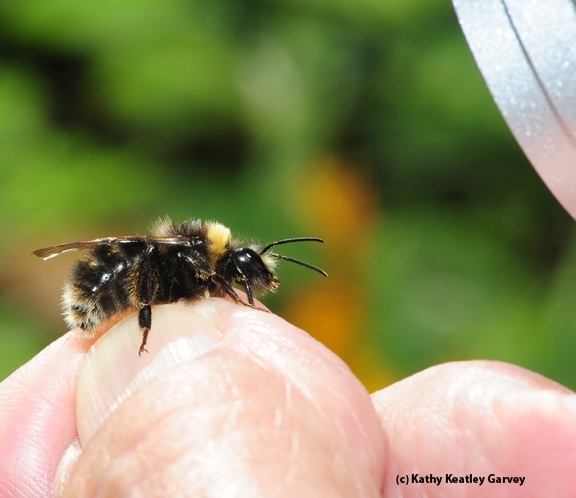
UC Davis research shows that rising temperatures are particularly alarming to some bumble bee species, including the Western bumble bee, Bombus occidentalis. This one was located on Aug. 15, 2012 in the Mt. Shasta area. (Photo by Kathy Keatley Garvey)
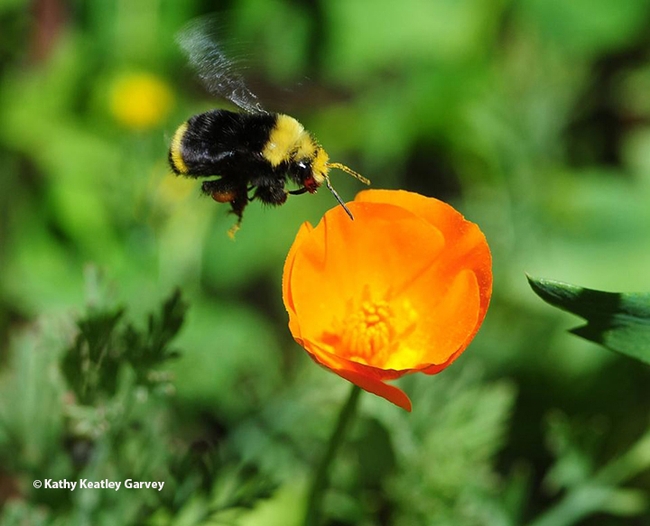
UC Davis researchers found that one of "the winners" in their climate change study is the yellow-faced bumble bee, Bombus vosnesenskii, shown here heading for a California golden poppy. (Photo by Kathy Keatley Garvey)
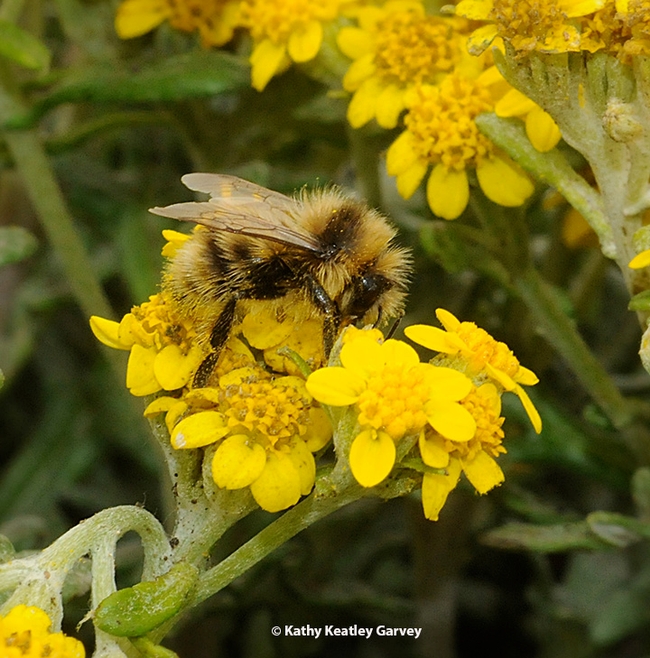
A male bumble bee, Bombus bifarius, nectaring on coastal goldfield, Lasthenia minor, at Bodega Bay. A UC Davis study shows that the rising temperatures are particularly alarming to a number of species, including this one. (Photo by Kathy Keatley Garvey)